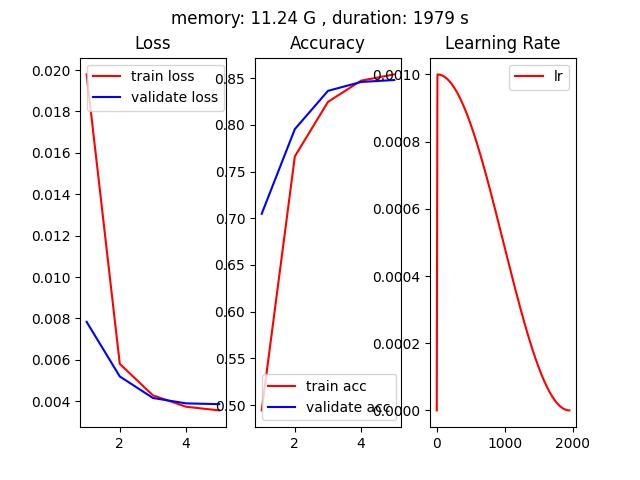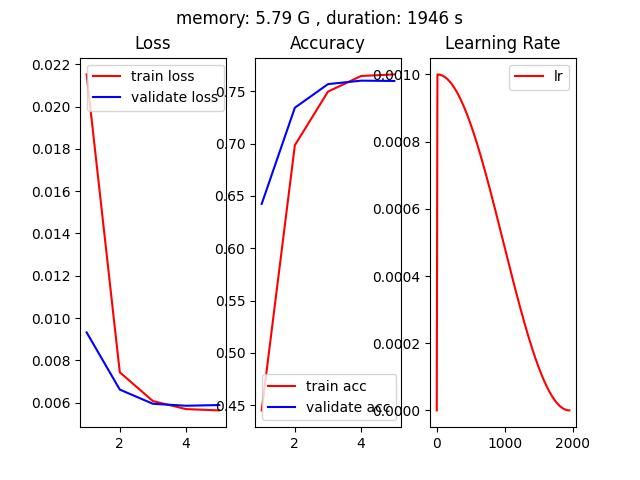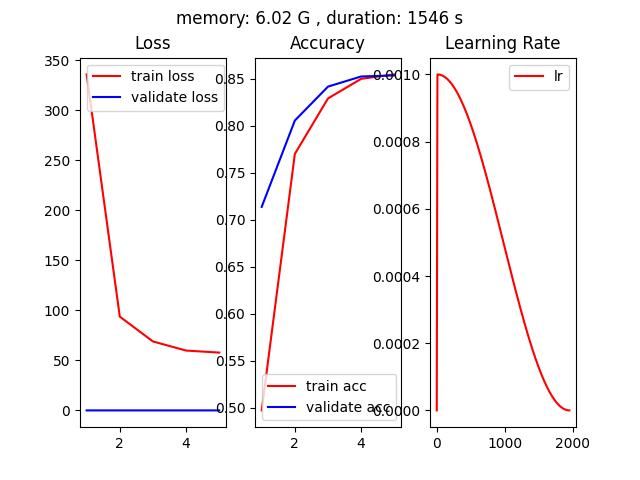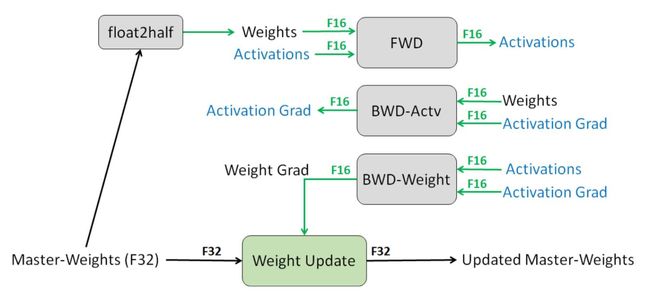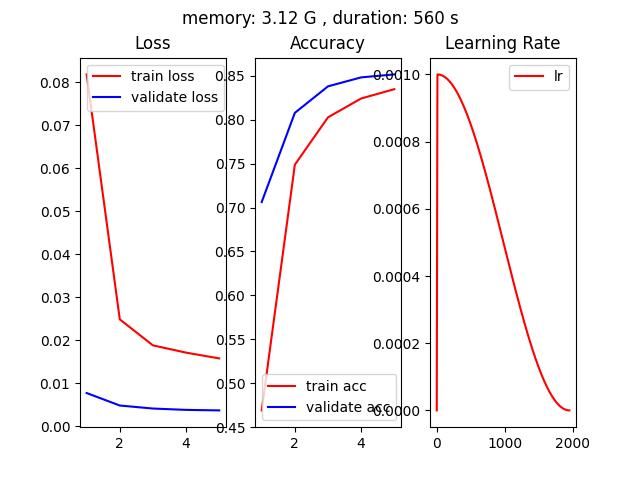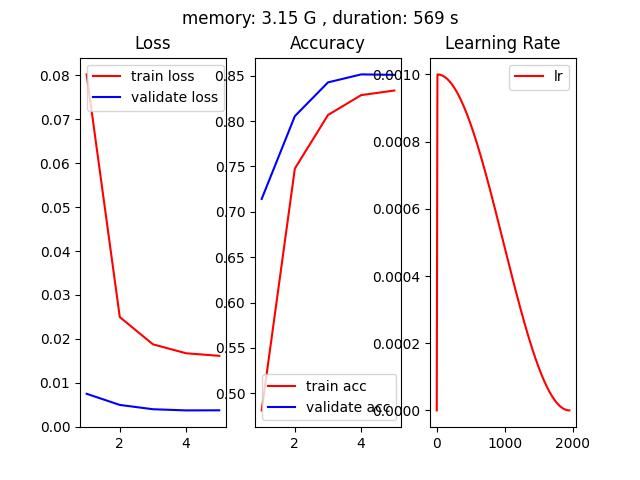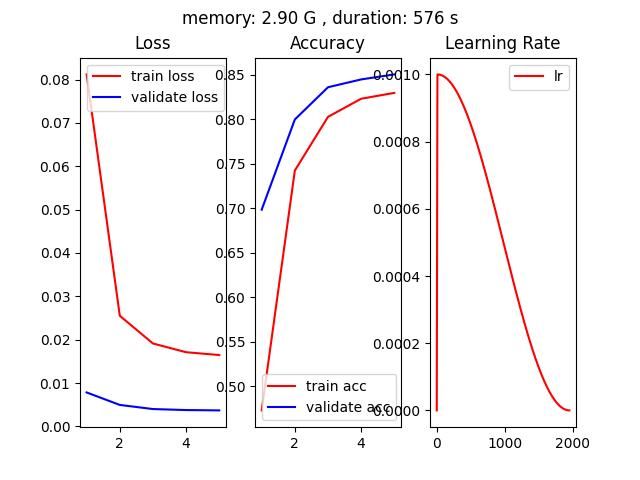pytorch单精度、半精度、混合精度、单卡、多卡(DP / DDP)、FSDP、DeepSpeed模型训练
pytorch单精度、半精度、混合精度、单卡、多卡(DP / DDP)、FSDP、DeepSpeed(环境没搞起来)模型训练代码,并对比不同方法的训练速度以及GPU内存的使用
代码:pytorch_model_train
FairScale(你真的需要FSDP、DeepSpeed吗?)
在了解各种训练方式之前,先来看一下 FairScale 给出的一个模型训练方式选择的流程,选择适合自己的方式,就是最好的。
训练环境设置
- 模型:预训练的Resnet50
- 数据集:Cifar10
- 硬件资源:一台4卡Tesla P40
- 训练设置:5 epoch、128 batch size
- 观察指标:显存占用、GPU使用率、训练时长、模型训练结果
备注:
- 由于P40硬件限制,不支持半精度fp16的训练,在fp16条件下训练的速度会受到影
响 - ResNet50模型较小,batch_size=1时单卡仅占用 0.34G显存,绝大部分显存都被输入数据,以及中间激活占用
测试基准(batch_size=1)
- 单卡显存占用:0.34 G
- 单卡GPU使用率峰值:60%
单卡单精度训练
- 代码文件:pytorch_SingleGPU.py
- 单卡显存占用:11.24 G
- 单卡GPU使用率峰值:100%
- 训练时长(5 epoch):1979 s
- 训练结果:准确率85%左右
单卡半精度训练
- 代码文件:pytorch_half_precision.py
- 单卡显存占用:5.79 G
- 单卡GPU使用率峰值:100%
- 训练时长(5 epoch):1946 s
- 训练结果:准确率75%左右
备注: 单卡半精度训练的准确率只有75%,单精度的准确率在85%左右
单卡混合精度训练
AUTOMATIC MIXED PRECISION PACKAGE - TORCH.AMP
CUDA AUTOMATIC MIXED PRECISION EXAMPLES
PyTorch 源码解读之 torch.cuda.amp: 自动混合精度详解
如何使用 PyTorch 进行半精度、混(合)精度训练
如何使用 PyTorch 进行半精度训练
pytorch模型训练之fp16、apm、多GPU模型、梯度检查点(gradient checkpointing)显存优化等
Working with Multiple GPUs
- 代码文件:pytorch_auto_mixed_precision.py
- 单卡显存占用:6.02 G
- 单卡GPU使用率峰值:100%
- 训练时长(5 epoch):1546 s
- 训练结果:准确率85%左右
- 混合精度训练过程
- 混合精度训练基本流程
- 维护一个 FP32 数值精度模型的副本
- 在每个iteration
- 拷贝并且转换成 FP16 模型
- 前向传播(FP16 的模型参数)
- loss 乘 scale factor s
- 反向传播(FP16 的模型参数和参数梯度)
- 参数梯度乘 1/s
- 利用 FP16 的梯度更新 FP32 的模型参数
- autocast结合GradScaler用法
# Creates model and optimizer in default precision
model = Net().cuda()
optimizer = optim.SGD(model.parameters(), ...)
# Creates a GradScaler once at the beginning of training.
scaler = GradScaler()
for epoch in epochs:
for input, target in data:
optimizer.zero_grad()
# Runs the forward pass with autocasting.
with autocast(device_type='cuda', dtype=torch.float16):
output = model(input)
loss = loss_fn(output, target)
# Scales loss. Calls backward() on scaled loss to create scaled gradients.
# Backward passes under autocast are not recommended.
# Backward ops run in the same dtype autocast chose for corresponding forward ops.
scaler.scale(loss).backward()
# scaler.step() first unscales the gradients of the optimizer's assigned params.
# If these gradients do not contain infs or NaNs, optimizer.step() is then called,
# otherwise, optimizer.step() is skipped.
scaler.step(optimizer)
# Updates the scale for next iteration.
scaler.update()
- 基于GradScaler进行梯度裁剪
scaler.scale(loss).backward()
scaler.unscale_(optimizer)
torch.nn.utils.clip_grad_norm_(model.parameters(), max_norm)
scaler.step(optimizer)
scaler.update()
- autocast用法
# Creates some tensors in default dtype (here assumed to be float32)
a_float32 = torch.rand((8, 8), device="cuda")
b_float32 = torch.rand((8, 8), device="cuda")
c_float32 = torch.rand((8, 8), device="cuda")
d_float32 = torch.rand((8, 8), device="cuda")
with torch.autocast(device_type="cuda"):
# torch.mm is on autocast's list of ops that should run in float16.
# Inputs are float32, but the op runs in float16 and produces float16 output.
# No manual casts are required.
e_float16 = torch.mm(a_float32, b_float32)
# Also handles mixed input types
f_float16 = torch.mm(d_float32, e_float16)
# After exiting autocast, calls f_float16.float() to use with d_float32
g_float32 = torch.mm(d_float32, f_float16.float())
- autocast嵌套使用
# Creates some tensors in default dtype (here assumed to be float32)
a_float32 = torch.rand((8, 8), device="cuda")
b_float32 = torch.rand((8, 8), device="cuda")
c_float32 = torch.rand((8, 8), device="cuda")
d_float32 = torch.rand((8, 8), device="cuda")
with torch.autocast(device_type="cuda"):
e_float16 = torch.mm(a_float32, b_float32)
with torch.autocast(device_type="cuda", enabled=False):
# Calls e_float16.float() to ensure float32 execution
# (necessary because e_float16 was created in an autocasted region)
f_float32 = torch.mm(c_float32, e_float16.float())
# No manual casts are required when re-entering the autocast-enabled region.
# torch.mm again runs in float16 and produces float16 output, regardless of input types.
g_float16 = torch.mm(d_float32, f_float32)
4卡 DP(Data Parallel)
- 代码文件:pytorch_DP.py
- 单卡显存占用:3.08 G
- 单卡GPU使用率峰值:99%
- 训练时长(5 epoch):742 s
- 训练结果:准确率85%左右
4卡 DDP(Distributed Data Parallel)
pytorch-multi-gpu-training
/ddp_train.py
DISTRIBUTED COMMUNICATION PACKAGE - TORCH.DISTRIBUTED
- 代码文件:pytorch_DDP.py
- 单卡显存占用:3.12 G
- 单卡GPU使用率峰值:99%
- 训练时长(5 epoch):560 s
- 训练结果:准确率85%左右
- 代码启动命令(单机 4 GPU)
python -m torch.distributed.launch --nproc_per_node=4 --nnodes=1 pytorch_DDP.py
基于accelerate的 DDP
huggingface/accelerate
Hugging Face开源库accelerate详解
- 代码文件:accelerate_DDP.py
- 单卡显存占用:3.15 G
- 单卡GPU使用率峰值:99%
- 训练时长(5 epoch):569 s
- 训练结果:准确率85%左右
- accelerate配置文件default_DDP.yml
compute_environment: LOCAL_MACHINE
distributed_type: MULTI_GPU
downcast_bf16: 'no'
gpu_ids: all
machine_rank: 0
main_training_function: main
mixed_precision: 'no'
num_machines: 1
num_processes: 4
rdzv_backend: static
same_network: true
tpu_env: []
tpu_use_cluster: false
tpu_use_sudo: false
use_cpu: false
- 代码启动命令(单机 4 GPU)
accelerate launch --config_file ./config/default_DDP.yml accelerate_DDP.py
Pytorch + FSDP(Fully Sharded Data Parallel)
Pytorch FULLY SHARDED DATA PARALLEL (FSDP) 初识
2023 年了,大模型训练还要不要用 PyTorch 的 FSDP ?
GETTING STARTED WITH FULLY SHARDED DATA PARALLEL(FSDP)
-
batch_size == 1
- 单卡显存占用:0.19 G,相比基准测试的 0.34G 有减少,但是没有达到4倍
- 单卡GPU使用率峰值:60%
-
batch_size == 128
- 单卡显存占用:2.88 G
- 单卡GPU使用率峰值:99%
-
代码文件:pytorch_FSDP.py
-
训练时长(5 epoch):581 s
-
训练结果:准确率85%左右
备注: pytorch里面的FSDP的batchsize是指单张卡上的batch大小
- 代码启动命令(单机 4 GPU)
python -m torch.distributed.launch --nproc_per_node=4 --nnodes=1 pytorch_FSDP.py
- FSDP包装后的模型
代码中指定对Resnet50中的Linear和Conv2d层应用FSDP。
基于accelerate的 FSDP(Fully Sharded Data Parallel)
-
batch_size == 1
- 单卡显存占用:0.38 G,相比基准测试的 0.34G 并没有减少
- 单卡GPU使用率峰值:60%
-
batch_size == 128
- 单卡显存占用:2.90 G
- 单卡GPU使用率峰值:99%
-
代码文件:accelerate_FSDP.py
-
训练时长(5 epoch):576 s,对于这个小模型速度和DDP相当
-
训练结果:准确率85%左右
- accelerate配置文件default_FSDP.yml
compute_environment: LOCAL_MACHINE
distributed_type: FSDP
downcast_bf16: 'no'
fsdp_config:
fsdp_auto_wrap_policy: SIZE_BASED_WRAP
fsdp_backward_prefetch_policy: BACKWARD_PRE
fsdp_forward_prefetch: true
fsdp_min_num_params: 1000000
fsdp_offload_params: false
fsdp_sharding_strategy: 1
fsdp_state_dict_type: SHARDED_STATE_DICT
fsdp_sync_module_states: true
fsdp_use_orig_params: true
machine_rank: 0
main_training_function: main
mixed_precision: 'no'
num_machines: 1
num_processes: 4
rdzv_backend: static
same_network: true
tpu_env: []
tpu_use_cluster: false
tpu_use_sudo: false
use_cpu: false
- 代码启动命令(单机 4 GPU)
accelerate launch --config_file ./config/default_FSDP.yml accelerate_FSDP.py
Pytorch + DeepSpeed(环境没搞起来,哈哈哈)
[BUG] error: unrecognized arguments: --deepspeed ./ds_config.json #3961
fused_adam.so: cannot open shared object file: No such file or directory #119
DeepSpeedExamples/training/cifar/
Getting Started
-
代码文件:pytorch_DeepSpeed.py
-
单卡显存占用:
-
单卡GPU使用率峰值:
-
训练时长(5 epoch):
-
训练结果:
-
代码启动命令(单机 4 GPU)
deepspeed pytorch_DeepSpeed.py --deepspeed_config ./config/zero_stage2_config.json
基于accelerate的 DeepSpeed(环境没搞起来,哈哈哈)
DeepSpeed介绍
深度解析:如何使用DeepSpeed加速PyTorch模型训练
DeepSpeed
- 代码文件:accelerate_DeepSpeed.py
- 单卡显存占用:
- 单卡GPU使用率峰值:
- 训练时长(5 epoch):
- 训练结果:

